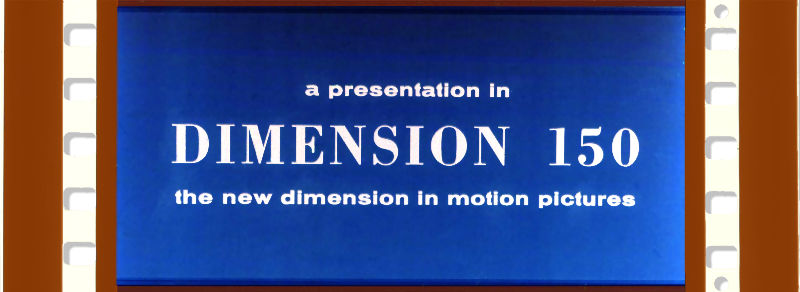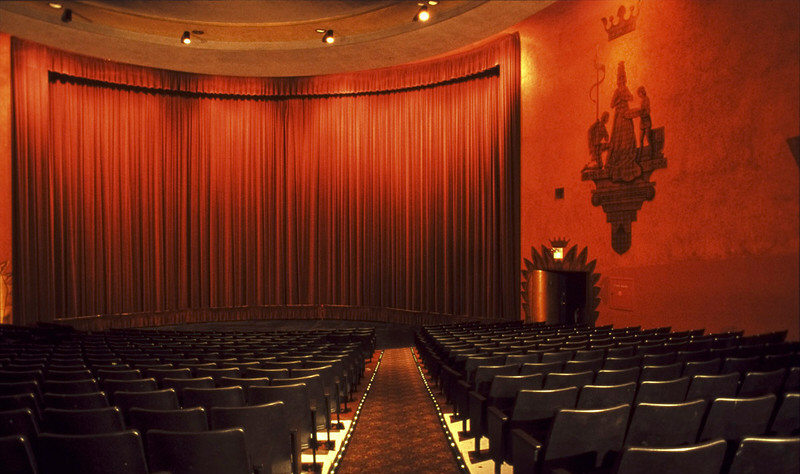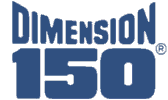
A product of Todd-AO Corp.
DIMENSION 150 and D-150 are demonstrated*
This material appeared in the March, 1964 issue of International Projectionist.
Our thanks to David Johnson for making it available.
| D-150 Demonstration Run Gets Unanimous 'Raves' | 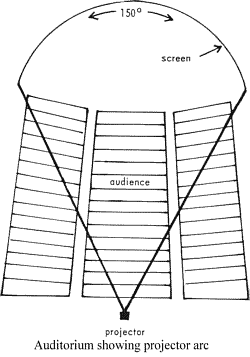 | |
A demonstration of Dimension-150 was held recently at the Skouras Syosset Theatre, Syosset, Long Island, N. Y.
| Two re-releases suitable for adaptation to the new process are "South Pacific" and "80 Days Around the World." Louis de Rochemont expects to release a feature in D-150 by early 1965. | |
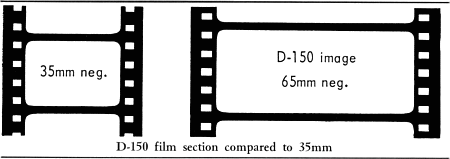 | ture producers the maximum in photographic and projection quality. The unique flexibility factors of D-150 in both photography and exhibition, plus its ability to create a sense of realism and audience participation mark an important step forward in the technical advancement of the motion picture medium.
| |
process offers producers and exhibitors maximum flexibility-from big, deeply-curved screen for roadshow policy, to standard flat-screen with 70mm prints and 35mm reduction prints in subsequent runs.
| prints in subsequent runs. Dimension-150 was developed over a period of several years by Dr. Vetter and Williams. Their many and varied tests under the most stringent and demanding conditions have resulted in a combination of technical developments to assure motion pic- | |
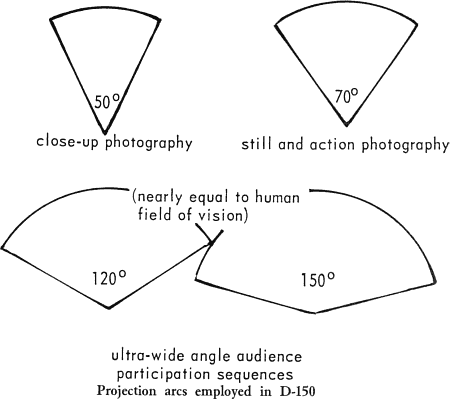 | ||
| INTERNATIONAL PROJECTIONIST March, 1964 | ||
*While "Dimension 150" and "D-150" were frequently used interchangeably, generally "Dimension 150" was most often applied to the photographic system and "D-150" was almost exclusively used to describe the system installed in theatres.©1964 International Projectionist - HTML transcription, including illustrations, ©2002 The American WideScreen Museum
Like the original Todd-AO system and later Cinerama single film presentation format, Dimension 150 made provision for optically corrected prints that better filled the deeply curved motion picture screen. Just how many such prints were put into use is unknown. To date, the Curator has not been able to obtain a sample of such a print. That's a hint for any of you film packrats that may have some of this stuff.
Illustration courtesy of Robert Weisgerber
Like the agreement that tied the use of Cinerama's full screen only to films that were licensed for official Cinerama release, D-150 Corporation reserved the use of the full size screen to films made in Dimension 150. As there was but two such films, the agreement was pretty much worthless when it was apparent that Fox had gone back to using the Todd-AO label. This is a large metal sign screwed to the side of a D-150 screen frame.
Photo courtesy of Matt Lutthans
Matt Lutthans also stumbled across this 70mm film used to announce a presentation on the full Dimension 150 screen.
Color restoration by the AWSM labs
The Coronet Theatre in San Francisco, CA. Showing the theatre after conversion to D-150 presentation. The Coronet was a very popular road show house in the San Francisco area. It had been refurbished numerous times to accommodate assorted 70mm formats including Todd-AO, MGM Camera 65 and Ultra Panavision, and finally D150.
You are on Page 14 of
















E-mail the author
CLICK HERE©1996 - 2004 The American WideScreen Museum
http://www.widescreenmuseum.com
Martin Hart, Curator
